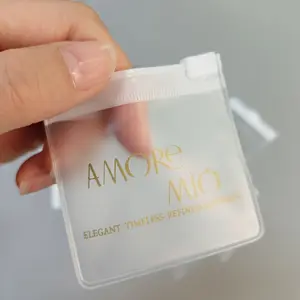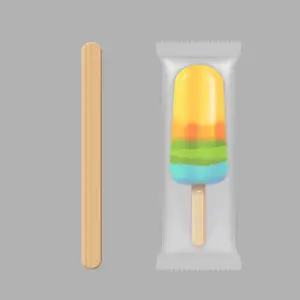
All categories
Featured selections
Trade Assurance
Buyer Central
Help Center
Get the app
Become a supplier

(1531 products available)




















































Plastic molded zippers are flexible fastening devices used in bags, clothes, and other items. They consist of a chain of molded plastic teeth, which are closed and opened by a sliding puller along a tape. Here are the types of plastic molded zip fasteners:
Injection-Molded Plastic Zipper
An injection-molded plastic zipper is a flexible fastener with teeth made from plastic. The teeth are formed by injecting molten plastic into a mold, producing strong, durable teeth resistant to corrosion and chemicals. These zippers are used in various applications, including clothing, bags, and industrial products, where a reliable, long-lasting fastener is needed. They can be molded into complex shapes, allowing for versatile designs that can accommodate different requirements. The injection molding process also enables high precision and consistency in the production of the zipper teeth, ensuring a smooth and secure fastening mechanism.
Thermoformed Plastic Zipper
A thermoformed plastic zipper is a fastening device with teeth made from plastic and shaped by heating and forming the material. This process creates flexible, lightweight, and strong teeth ideal for various applications, including clothing, bags, and automotive products. Thermoforming allows for complex shapes and designs, making these zippers versatile and easy to integrate into different products. They are also resistant to corrosion and chemicals, making them suitable for outdoor and industrial uses. The thermoformed teeth latch together securely, providing a reliable and durable fastening solution that can withstand repeated use and stress.
Molded Plastic Zipper
A molded plastic zipper is a type of fastener with teeth made from plastic and formed using a molding process. The teeth are typically made from materials like nylon or polyacetal, providing flexibility and strength. Molded plastic zippers are commonly used in clothing, bags, and other textile products due to their lightweight nature and resistance to corrosion and chemicals. They can be produced in various sizes and configurations, making them suitable for a wide range of applications. The molding process ensures consistent tooth shape and alignment, resulting in a smooth and reliable fastening mechanism.
Extruded Plastic Zipper
Extruded plastic zippers are flexible fasteners with interlocking plastic teeth. These zippers are created by forcing molten plastic through a die to form the teeth, which are then cooled and solidified. The result is a lightweight, durable, and corrosion-resistant fastening system ideal for various applications, including clothing, bags, and automotive products. Extruded plastic zippers can be made from several materials, including nylon, polyester, and polypropylene, each offering distinct characteristics and benefits. For instance, nylon zippers are known for their strength and flexibility, while polyester zippers provide excellent UV resistance. The extruding process enables the production of long, continuous lengths of zipper tape, which can be easily cut to size and customized for specific requirements. These zippers are often preferred for their reliability, ease of use, and ability to withstand repeated opening and closing without deterioration.
Plastic molded zippers exhibit a wide range of designs. Each design offers unique functionality and aesthetic appeal. Here are some key design elements and considerations:
Tape Designs
The zipper's tape is its fabric portion. It holds the teeth or coils. Tapes may be flat or rolled. They come in various widths. For example, they're 3mm to 100mm wide. The tape's edge may have a finished or raw look. Zipper tapes are usually cotton or polyester. They may be cotton, polyester, or nylon. Cotton tapes offer breathability and strength. Polyester tapes are more water-resistant. Nylon tapes are flexible and robust.
Teeth and Coils
The teeth or coils are vital components. They form the closure mechanism. Plastic molded zippers have teeth made from molded plastic. The teeth are usually arranged in one or two lines. Single-line zippers have teeth on one side. Double-line zippers have teeth on both sides. The double-line design offers a stronger seal. The teeth's shape may be triangular or square. Triangular teeth provide a sharper grip. Square teeth offer a more secure lock.
Slider and Pull
The slider moves along the tape. It has a simple or double-sided design. The double-sided slider allows the pull to be on either side. The pull is the part one grips to zip or unzip. It may have a loop or flat shape. The pull can be flat or loop-shaped. It may have a logo or pattern. The pull's surface can be smooth or textured. Textured pulls offer a better grip. The slider may have a locking mechanism. This mechanism secures the slider in place. It prevents the zipper from opening accidentally.
End Stops and Sealing
End stops are at the zipper's ends. They keep the teeth in place. Stops may be plastic or metal. Plastic stops are lighter. Metal stops provide more strength. The zipper may also have a sealing mechanism. Sealing provides an airtight closure. This feature is useful for waterproof zippers. Sealing may use a flap or liner. Flaps cover the teeth. Liners fit snugly between tape edges. Sealing enhances the zipper's security and water resistance.
Special Features
Plastic molded zippers may have special features. For example, some have reflective strips. These strips enhance visibility in low light. Other zippers may have a waterproof flap. The flap protects against water penetration. There are also zippers with anti-theft locks. They secure bags and cases against theft. Special features enhance the zipper's utility and security.
Wearing a molded plastic zipper involves a straightforward process that enhances the functionality and style of garments and accessories. Also, to start, the wearer should identify the zipper pull tab, which is usually found at the top of the zipper slider. In addition, they should grasp the zipper pull between their thumb and forefinger and slowly slide it downward to open the zipper. Normally, this separates the interlocking teeth of the zipper to create an opening.
Additionally, to close the zipper, the same procedure is reversed. In this case, the user should pull the slider upwards until the teeth click together and lock into place. More importantly, they should ensure the zipper is free of any obstructions along its track for a smooth operation. Overall, molded plastic zippers are known for their durability and versatility. This makes them ideal for various clothing options, including jackets, pants, and bags.
Matching a molded plastic zipper requires considering several key factors to ensure a seamless fit and functionality. To start with, the length of the zipper should be ideal for the specific application. For instance, a shorter zipper is suitable for smaller openings. For instance, pockets or cuffs. On the other hand, a longer zipper works well for jackets or full-length pants. In addition, the width of the zipper tape and teeth should also be compatible with the garment or accessory. This ensures ease of use and durability.
Moreover, the color and style of the molded plastic zipper should complement the overall design. For instance, a bright-colored zipper can add a contrasting detail. Conversely, a neutral-colored zipper blends seamlessly. More importantly, the type of slider mechanism should be taken into consideration. Ideally, a single pull slider is common for most applications. However, double sliders are suitable for split zippers that allow opening from both ends. Essentially, by considering these factors, users can select a molded plastic zipper that enhances both functionality and aesthetic appeal in their projects.
Q1: What are the advantages of plastic molded zipper over metal and nylon zip?
A1: Molded plastic zip is lightweight, versatile, and corrosion-resistant. Unlike metal zips, they do not rust or get affected by chemicals and moisture. This makes them ideal for marine applications. They are also more flexible than nylon zip, making them suitable for applications that require a zip that can bend and flex without breaking.
Q2: Can plastic molded zipper be used in high-temperature applications?
A2: Plastic molded zippers are suitable for low to moderate temperatures. They may not be suitable for high-temperature applications as some plastic materials may melt or deform. It is essential to select the right plastic material based on the temperature requirements of the application.
Q3: Are plastic molded zipper waterproof?
A3: The waterproofing of plastic molded zippers depends on the design and materials used. Generally, plastic zippers are more water-resistant than nylon and metal zippers. If the teeth are made of PVC or polyurethane and the slider is made of rubber, they are likely to be waterproof. Additionally, if the zipper is sealed with a flap, it becomes more water-resistant. For marine and outdoor applications, ensuring the zippers are waterproof is critical.
Q4: Can molded plastic zippers be repaired if they break?
A4: Repairing a plastic molded zipper can be challenging. In most cases, it is easier to replace the entire zipper than to repair it. Depending on the type of damage, it may be possible to replace the slider or repair the teeth. However, repairs may not always be successful, and replacement is often the best option.
Q5: Can plastic molded zippers be used for heavy-duty applications?
A5: Plastic molded zippers are suitable for medium to heavy-duty applications. Their strength and flexibility make them ideal for applications such as luggage, clothing, and outdoor gear. However, for very heavy-duty applications like industrial machinery or heavy-duty bags, metal zippers may be more suitable due to their strength.